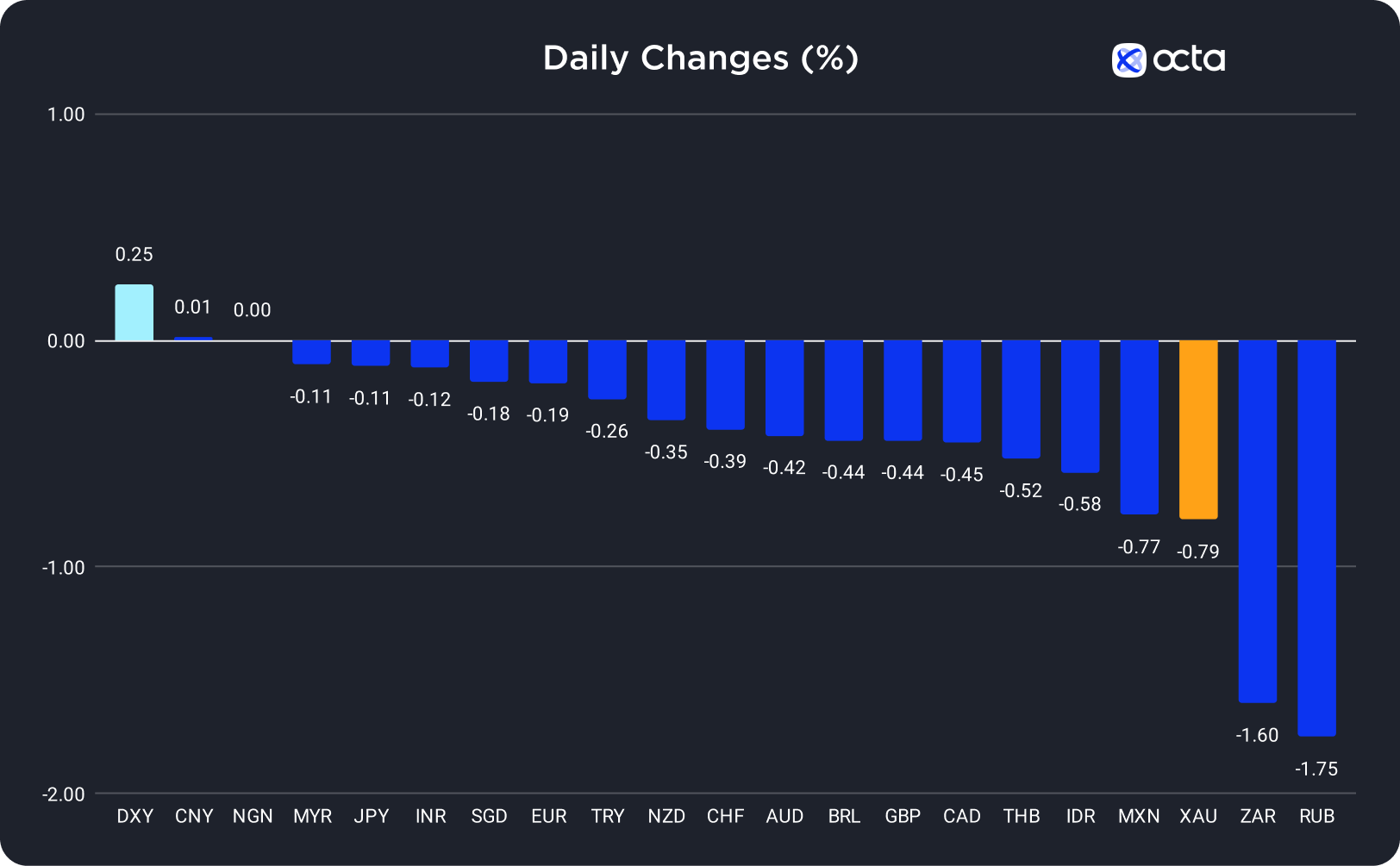On Tuesday, the US dollar was the best-performing currency among the 20 global currencies we track, while the Russian rouble (RUB) showed the weakest results. The Chinese yuan was the leader among emerging markets, while the Canadian dollar (CAD) underperformed among majors.
Gold Continues Falling on Hawkish Fed Stance
Despite U.S. macroeconomic reports being weaker than expected, the US Dollar Index (DXY) continued to rise, while gold (XAU) fell sharply.
The prospect that the Federal Reserve (Fed) will maintain its base interest rate at a high level for longer continues exerting downward pressure on XAU/USD. Indeed, the gold price dropped below a one-month low, as the market now expects a rate cut to not come until July 2024. The possibility of high U.S. interest rates is fuelling fears of a global recession and stimulating risk-off flows in the US dollar. Thus, most other major currencies depreciate, and commodities prices decline.
XAU/USD was falling during the Asian and early European sessions as the US dollar continued to increase. Today, traders should focus on the release of the U.S. Durable Goods Orders report at 12:30 p.m. UTC. Lower-than-expected figures should positively impact XAU/USD, potentially pushing the gold price above 1,900. However, the bearish trend in the pair may continue if the figures come out better than expected.
The Euro Dropped to a Six-Month Low
On Tuesday, the euro lost 0.19%, dropping below the important 1.06000 to a six-month low.
EUR/USD decreased by almost 3% in September as the bearish divergence between the European and the U.S. monetary policies grew stronger. Indeed, the European Central Bank (ECB) has signaled an end to its tightening cycle, while the Federal Reserve (Fed) continues to sound hawkish. Austan Goolsbee, Chicago Fed president, stated that high inflation is a much greater risk than a slowing economy due to the tight central bank's monetary policy. Thus, the Fed seems dedicated to sticking with its hawkish stance. Meanwhile, the latest eurozone macroeconomic data reveals a rather gloomy picture. For example, the German GfK Consumer Climate Index came out weaker than expected earlier today.
XAU/USD was falling during the Asian and early European sessions. Frank Elderson, the ECB board member, said the interest rates could still rise because low inflation is now the priority for the regulator. Still, these comments failed to support the euro. Today, traders should pay attention to the release of the U.S. Durable Goods Orders report at 12:30 p.m. UTC. Lower-than-expected numbers may push the pair above 1.06000. However, the pair may continue to decline if the figures are better than expected.
